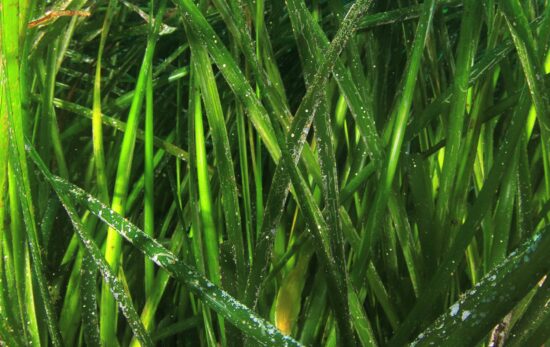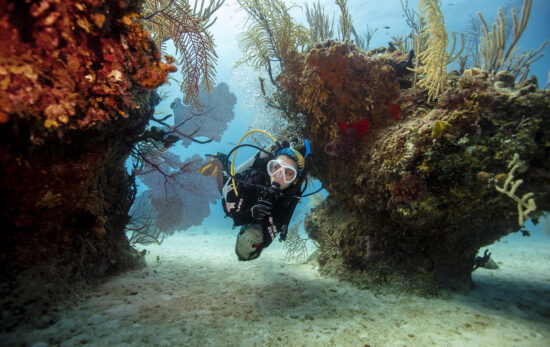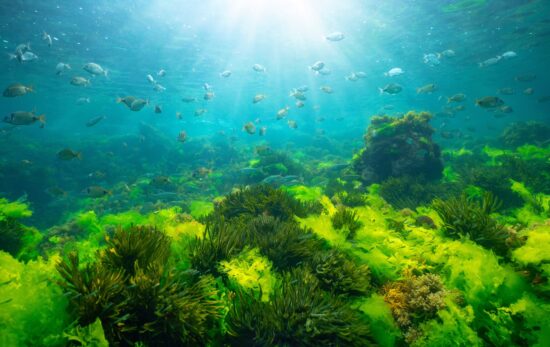Being a PADI diver puts individuals in a unique position where they have access to, literally, an ocean of possibilities. As well as experiencing parts of the world that others can only dream of, PADI divers can use their dive skills to support good causes such as conservation projects, community initiatives, research missions, and in the case of these PADI torchbearers, working for the animals!
Here are the stories of PADI divers who have dedicated their time, and dive skills, to protecting, researching, and conserving endangered species around the globe by working with the animals they love.
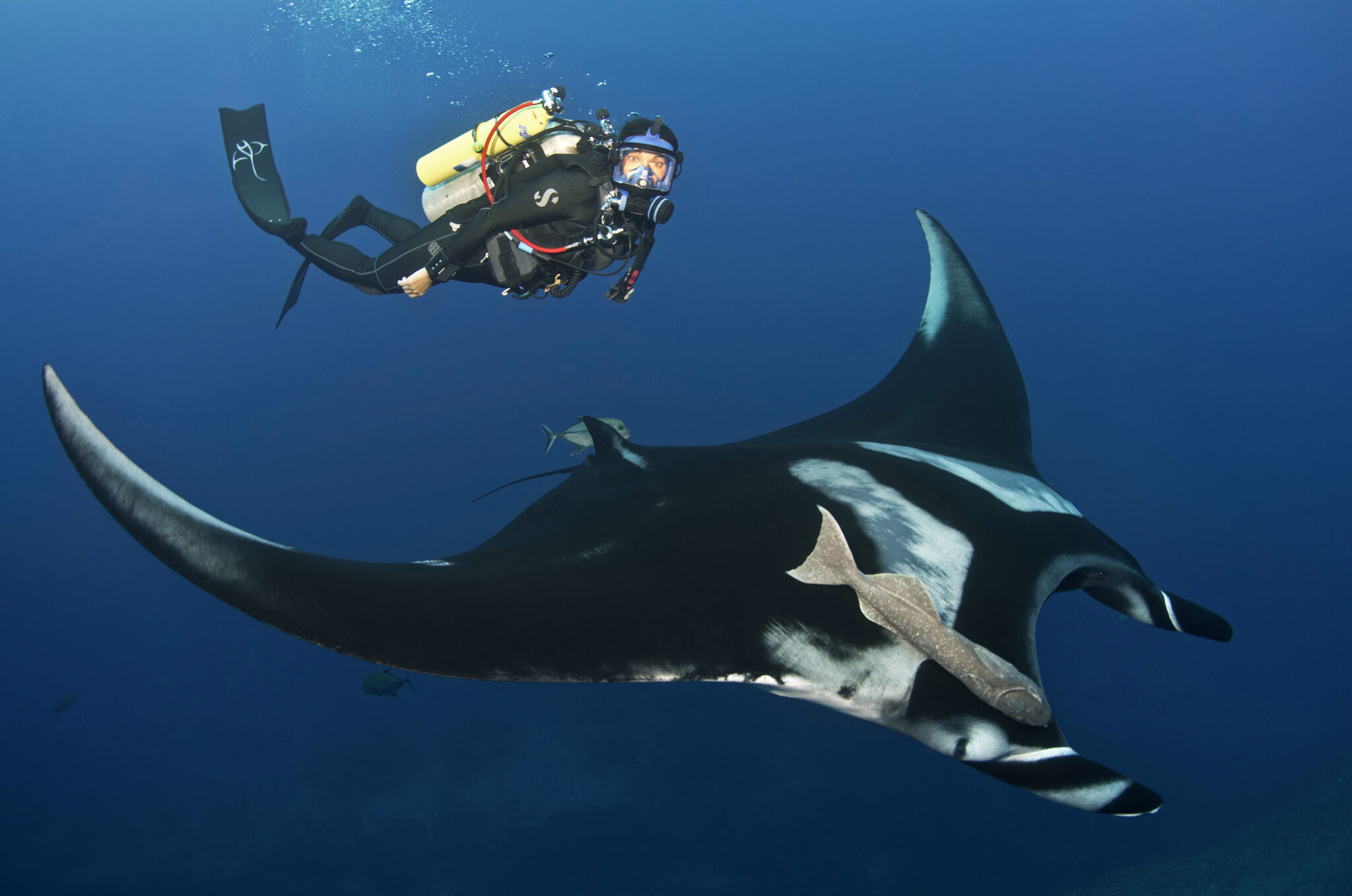
Dr Andrea Marshall, Founder and Principal Scientist (Marine Megafauna Foundation)
Dr Andrea Marshall holds a PhD in manta ray ecology from the University of Queensland in Australia. She is a marine biologist whose interests largely lie within the fields of scientific research and exploration. Andrea considers herself a conservation biologist as her work focuses predominately on questions related to the effective management and conservation of threatened marine species. She has been living in the field for the last twenty years, based largely in Africa. Here’s what Andrea has to say about what she does and why…
My team and I study the ecology or population dynamics of marine megafauna species like manta rays or whale sharks to help gain a better understanding of the species as a whole and to develop better management strategies for specific populations under threat. To do this we are constantly exploring areas faced with particular conservation problems and monitoring specific populations, sometimes for years and years at a time. Personally, I have always been interested in using technology to push the limits of our knowledge of these animals. Sometimes this means using advanced telemetry equipment for the first time to track these animals into the depths of the ocean or as they make broad-scale migrations, other times it means pushing your own limits with technical diving technology, which allows us to better explore the environments used by our flagship species. Every day, every year, it is a different issue or question, and it is this never-ending quest for information about the animals that keep me inspired as a scientist. I hope in my lifetime to contribute enough scientific information to develop effective conservation solutions for threatened marine species like manta rays and whale sharks. And since I know that I may only get part of the way to realizing some of my goals, I am also working hard to inspire a new generation of marine activists and educators to carry my work to fruition long after I am gone.
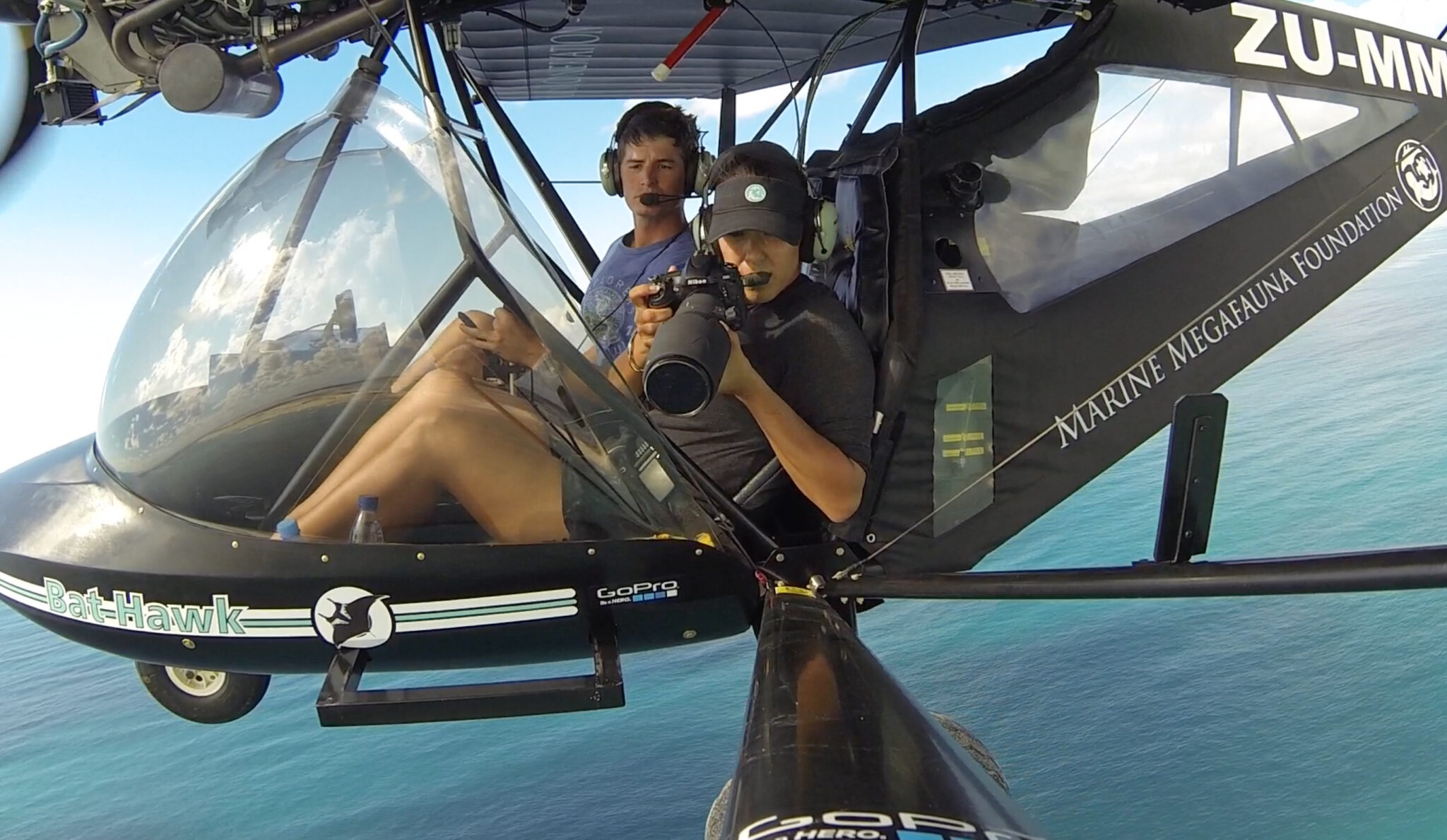
Proudest moments
One of Andrea’s proudest achievements was contributing to the scientific research that underpinned the CITES victory at the CITES CoP in Bangkok with majority support by parties to list all species of manta rays in Appendix II.
Her other proudest achievement is the creation of the first global online database for manta rays. It operates with an automated algorithm that matches the unique spot patterns of manta rays like the FBI fingerprint database. “Manta Matcher“, as it is affectionately called, stands to revolutionize manta ray research by both centralizing data and tapping into a much broader base of contributors, namely the SCUBA diving community around the world.
My favourite part of being a conservation biologist is seeing the fruits of your labour. We all do this job for the love of animals and it is our passion for the natural world that constantly drives us forward. So when you can see that the work that you are doing is directly contributing to the survival of a species or the management of vulnerable populations, it is the most rewarding feeling in the world. This might seem like a big task, and it is… sometimes it takes lifetimes to achieve this kind of ambitious goal. But success stories around the world are a testament to the fact that it can be done and that the commitment and passion of conservation biologists are making happen one project at a time. At the moment we are working to protect the core habitat for manta rays in southern Mozambique and success would be a series of connected MPAs along the coast that formed a seascape of protection to help safeguard Africa’s largest identified manta population which is under threat at the moment.
Following in her footsteps
Andrea has some great tips when it comes to following in her footsteps and she credits much of her success to surrounding herself with passionate colleagues, living her life in the field, making use of technology, and being creative, but mostly due to doing what she loves and is passionate about!
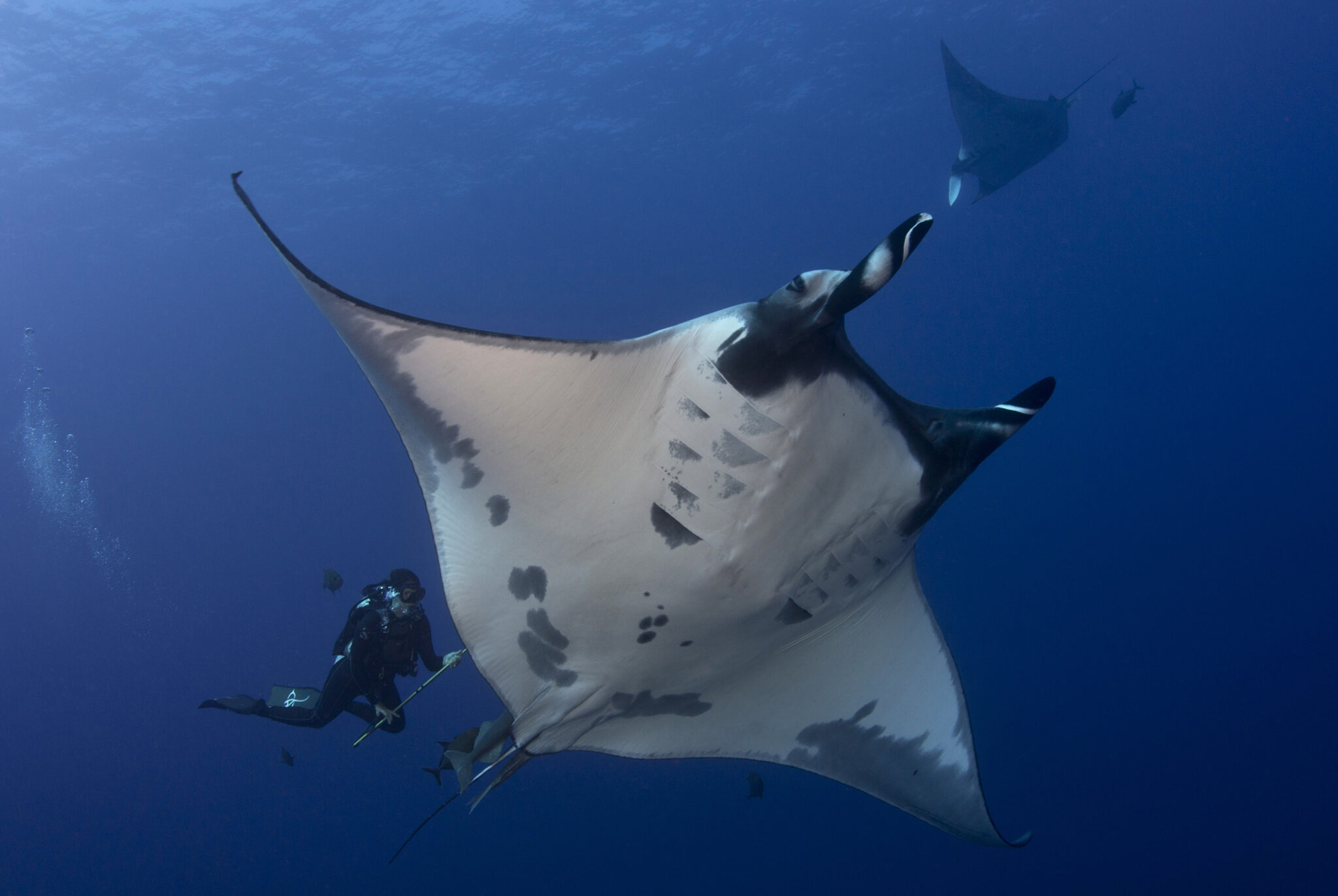
Andrea’s Message
Andrea recommends casting your vote or voicing your opinion. Keep your eye out for petitions to sign or other ways to help campaign for manta ray protection. It might not seem like it, but many of the sanctuaries and reserves of the world were created off momentum fueled by public outcry. If you are frustrated with the lack of protected areas in your backyard, do some digging around, see what campaigns or projects are in the pipeline, and figure out what you can do to help, even if it is only by lending your voice.
Scuba divers can also help by doing what they do best…going for a dive. The enormous costs of running protected areas can hamper their establishment. Of course, the faster they can become self-sustaining, the more likely they are to succeed and serve as models for others behind them. A surefire way for national parks, marine reserves, and protected areas to sustain themselves is through tourism. Just as ocean lovers favour companies with good environmental policies, purchase eco-friendly products and abstain from eating unsustainably caught fish, it is important that the public supports protected areas around the world by simply visiting them. The surest way for you to voice your approval of protected areas is to preferentially support them over areas that are not protected or that are managed poorly. This small act of support can have a huge impact on the success of these kinds of initiatives and help facilitate the creation of future protected areas.
Members of the diving public can also start contributing to citizen science efforts. There are so many divers out there unknowingly collecting really important data for science. The footage you take or the observations you make might be very important to scientists. Learn more about how you can get involved with citizen science projects online. For instance, to get involved with manta ray conservation, divers can start contributing to the global online manta ray database Manta Matcher (www.mantamater.org).
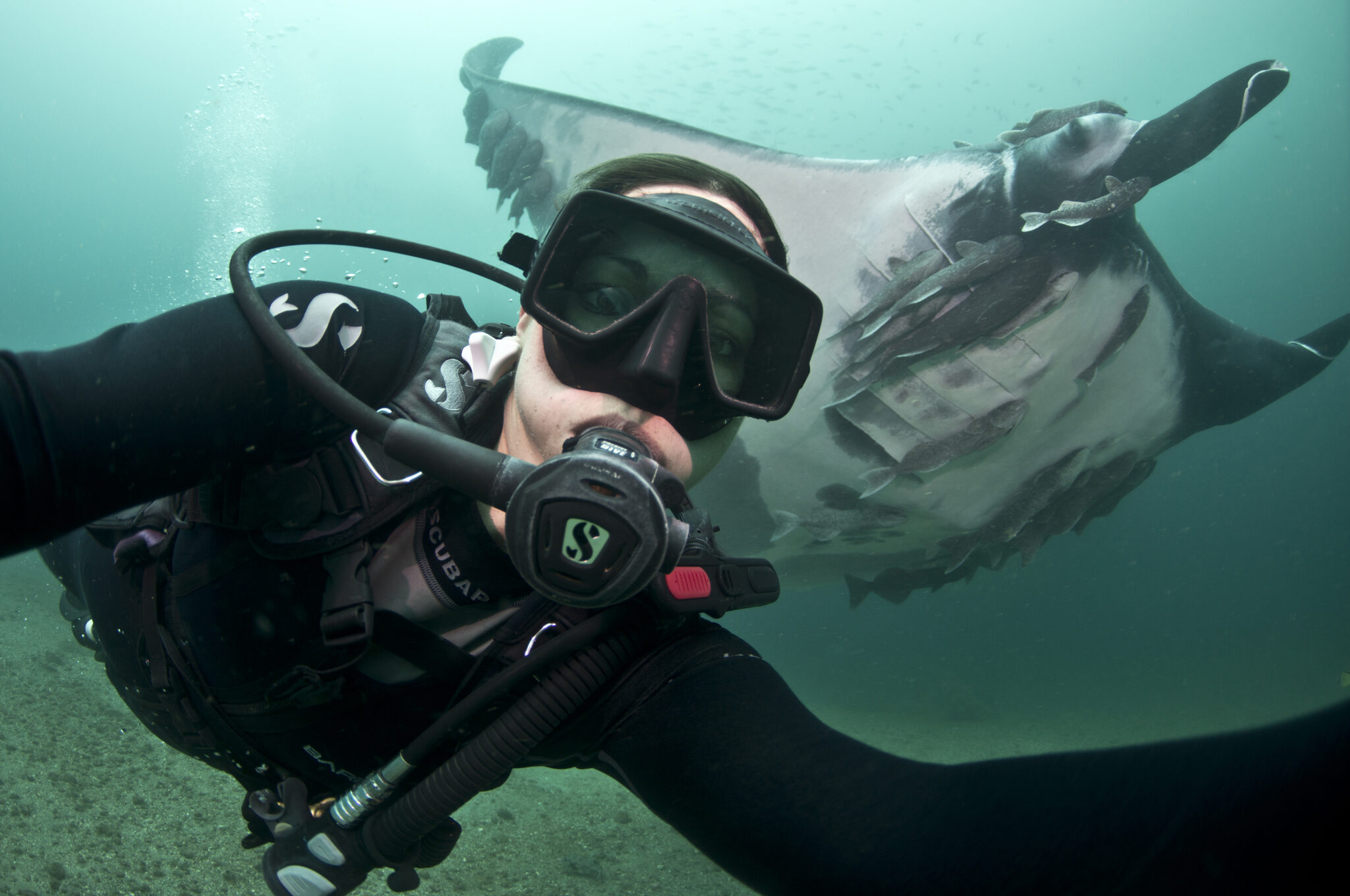
Learn more about Andrea’s projects
Websites: www.marinemegafauna.org, www.queenofmantas.com
Instagram: @marinemegafauna, @queenofmantas
Twitter: @marinemegafauna, @queenofmantas
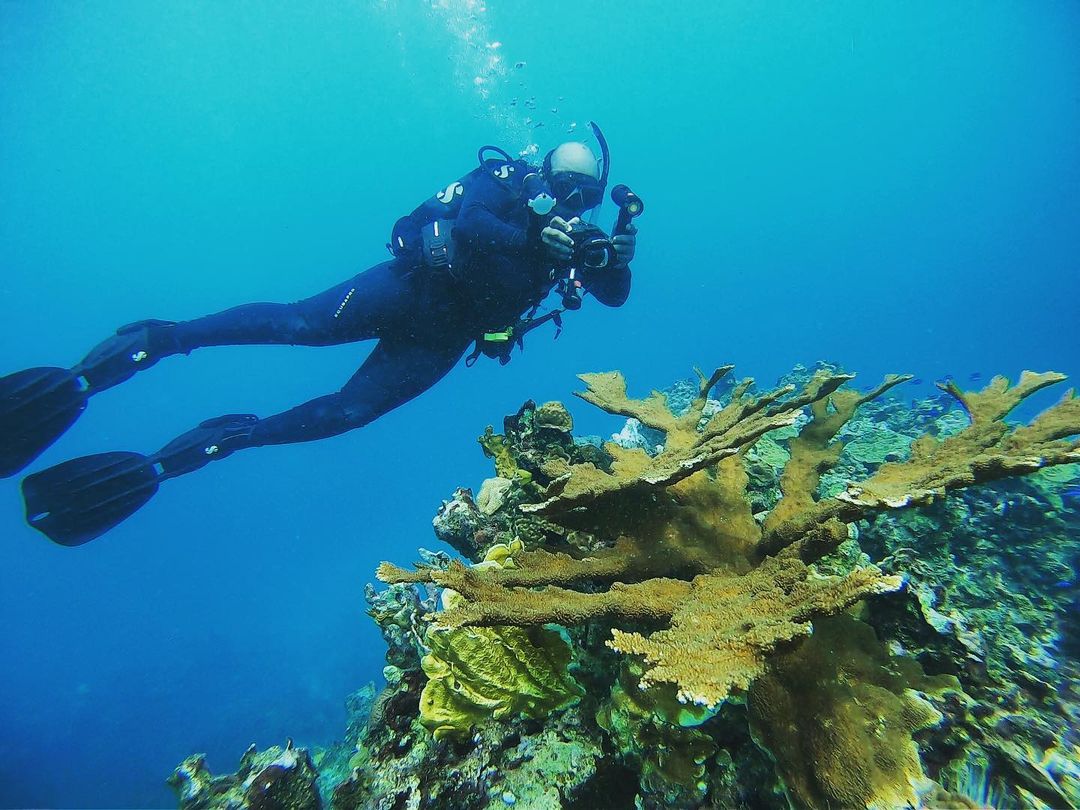
Dr Dayne Buddo, Marine Biologist, Director of External Engagement, Georgia Aquarium
Dr Dayne Buddo has always been fascinated with the ocean since he was 5 years old and glued to the TV watching underwater documentaries. Becoming a Marine Biologist was the only career he wanted to pursue. Although he didn’t learn to swim until he was 20 years old, 2 months later he became a PADI Open Water Diver and started a graduate degree in Marine Biology.
Dr Buddo says that taking his first breath underwater during his PADI Open Water Training, in June 1999 was the moment that he knew he belonged in the ocean and was destined to become a Marine Biologist. That was over 8,000 dives ago, and he still remembers that moment to this day.
Today Dr Buddo works at Georgia Aquarium (501 c3) as a Director and he is on the Board of Advisors for the Ocean Foundation as well as being on the Grant Board for the National Conservation and Trust Fund (Jamaica). He is also part of the National Fisheries Management Board in Jamaica, the Aquarium Conservation Partnership (ACP) Steering Committee, ACP Equity Working Group, and the ACP Policy Working Group
Dr Buddo has worked with invasive species including green mussels and lionfish, several species of sharks, endangered corals, and marine turtles (green sea turtle, hawksbill, leatherbacks, and loggerheads). He has also worked to establish marine protected areas and fish sanctuaries which have resulted in the protection of multiple fish species.
Proudest moments
Dr Buddo’s proudest moments to date include earning a PhD in Marine Sciences, earning his PADI Master Instructor Certification, and being invited to address the United Nations on Ocean Conservation.
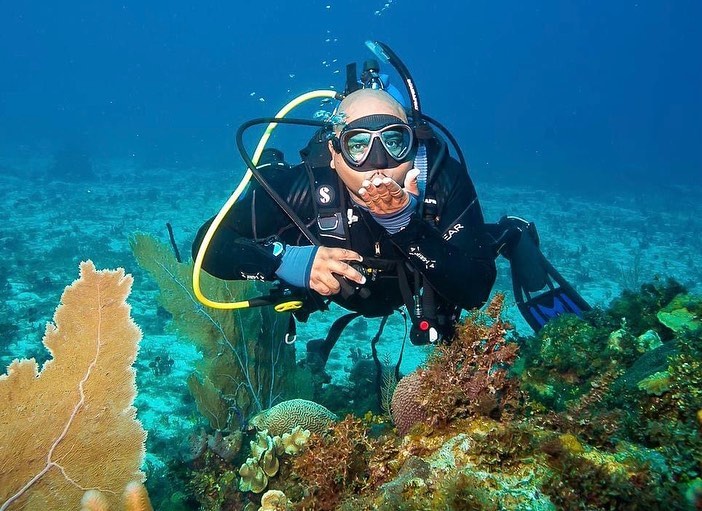
Following in his footsteps
Dr Buddo credits much of his success to seeking out and developing partnerships, getting out, giving his time and taking part. He recommends that individuals wanting to follow in his footsteps position themselves to take advantage of opportunities when they come; get your degrees, get skilled training: Be ready to make a difference.
He also advises others to seek to develop programs and opportunities for the next generation, programs that you would have wanted when you were at their stage.
Dr Buddo’s Message
It’s an “All hands on deck” approach to solving our problems in the ocean and the animals that reside within it, as it will affect everyone. We are all connected ecologically to the ocean, so we must be connected in solving the issues…so get involved. Science does not only belong to Scientists, as citizens who simply love the ocean, but you can also do your part. There is no shortage of need, only a shortage of hands, so dive with a purpose in mind.
Learn more about Dr Buddo’s projects
Websites: www.georgiaaquarium.org/
Instagram: @dayne_buddo
LinkedIn: Dayne Buddo
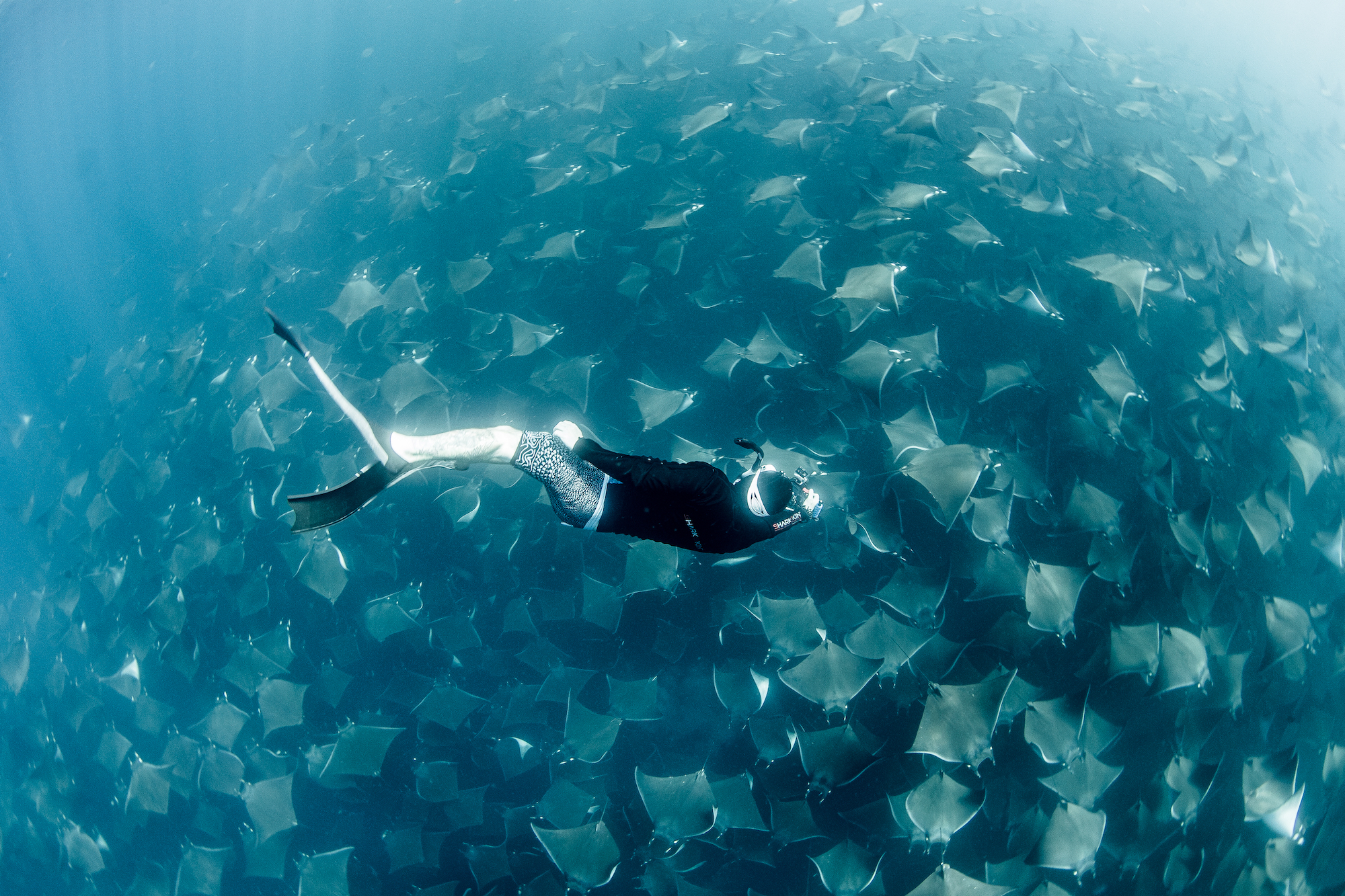
Jay Clue, Photographer and founder of Dive Ninja Expeditions
Jay Clue is a PADI Master Instructor, Tec Trimix Instructor, multiple specialty course instructor, and award-winning underwater photographer. Before diving, Jay worked in design & design research. His doctoral research was based on community development and he has 4 degrees centred mainly around Communication Arts (design) & community development. Jay says he is always trying to learn new things and takes a variety of classes whenever he can.
Jay works primarily in Baja California Sur, Mexico but lately, he has been working on projects all over the world. In the last 6 months he has worked on projects in Cocos Island, Galapagos, Socorro, Cat Island, Egyptian Red Sea, Bimini, California, and Isla Guadalupe.
Jay is an Ocean Culture Life Ocean Guardian & Storyteller, a Nakawe Project Closed Hook Ambassador, an Empty The Tanks Ambassador, a Sharks 4 Kids Ambassador, Mares Mexicanos Photographer, and a PADI Torchbearer. He also has ongoing collaborations or recent projects with Project AWARE, Sea Legacy, Mobula Conservation Project, Sea Shepherd, Pacific Manta Research Group, Saving Los Cabos, Organización SyComa (sea turtle rescue), and numerous other conservation programs and research centres.
Jay designs citizen science and conservation-based tours and expeditions to utilize sustainable tourism as a vessel to further marine research and conservation initiatives – primarily aimed at supporting work to protect endangered species.
Through exploring the beauty of the ocean and the animals within it, Jay says:
I started to also learn about all the issues our oceans and their inhabitants were facing and it really hit me in the heart. Here was this new incredibly beautiful world I had just begun to fall madly in love with, yet it was in peril and being destroyed. I couldn’t believe it and it started to eat away at me. Then through random chance occurrences, I met all these different passionate divers and ocean lovers who were so inspiring and trying to fight to protect our oceans in their own ways. It left me thinking, how can I make a difference? I’m not a scientist or a marine biologist – so how can I drive meaningful impact? So I began volunteering on any projects I could to learn more and help out in any way I could. These experiences tied with my background before diving helped me to start to formulate my mission.
Around this time, Jay picked up his first camera, and quickly realize how powerful of a tool it could be for conservation. Not only could he now show the world what he was doing, but he could spread the beauty of our oceans even further to reach humans who may never have the chance to experience what lies beneath the waves.
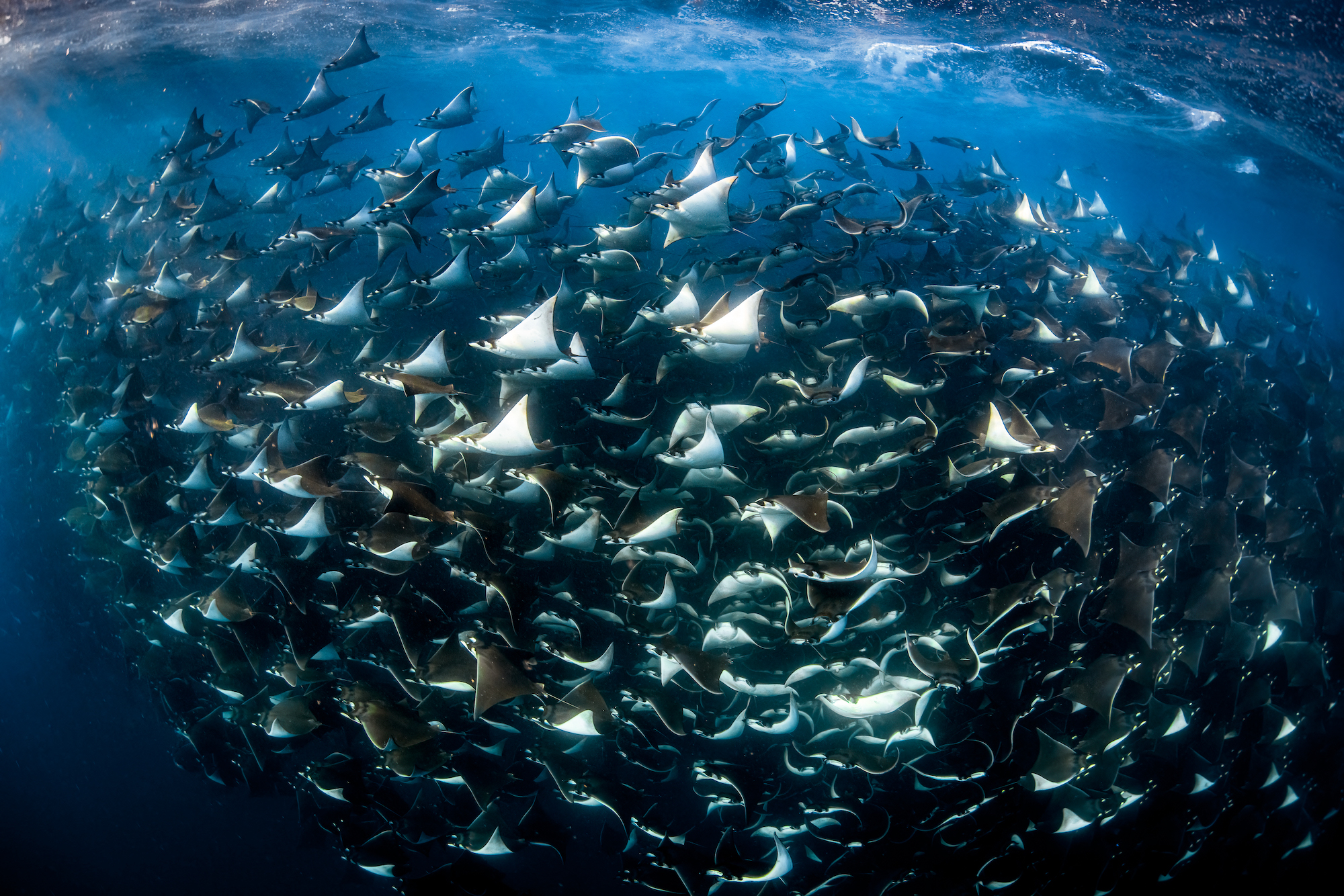
Proudest moments
Jay’s proudest moments include what his programs have accomplished in terms of supporting research, funding projects, and creating platforms that can really push marine conservation forward. He is also proud of the human elements he has experienced, such as seeing how programs like his Mobula ray expeditions or Divemaster training completely change someone’s perspective and ignite a spark inside them.
Jay says that he has had guests on trips that went home and created a project to have disposable plastics almost completely removed from the hospital they worked at, others that have gone on to create grassroots campaigns in their hometown, or created a program to teach local school children about the ocean and so many more incredibly beautiful stories. Recently he had a divemaster student who left the program as one of the most passionate divers he has met in a very long time. Now she’s working in the industry full time creating her own projects and awareness campaigns. These moments fill him with pride – and that’s not even considering the ripple effect of these unsung heroes going on to inspire others to follow in their footsteps, and become ocean defenders and protectors of the animals.
Following in his footsteps
For those wanting to follow in Jay’s footsteps, he gives this solid advice:
Don’t ever think any action is too small or that you aren’t able to make a difference. Every little bit helps the animals. We all have different backgrounds, skillsets, and experiences that make us who we are today. Conservation isn’t just lobbying politicians or saving entangled dolphins from nets. It needs accountants, lawyers, designers, logistics, writers, divers, dreamers, and everything. Find a cause you are passionate about and reach out to local organizations to see how you can help. Take that first step and get involved.
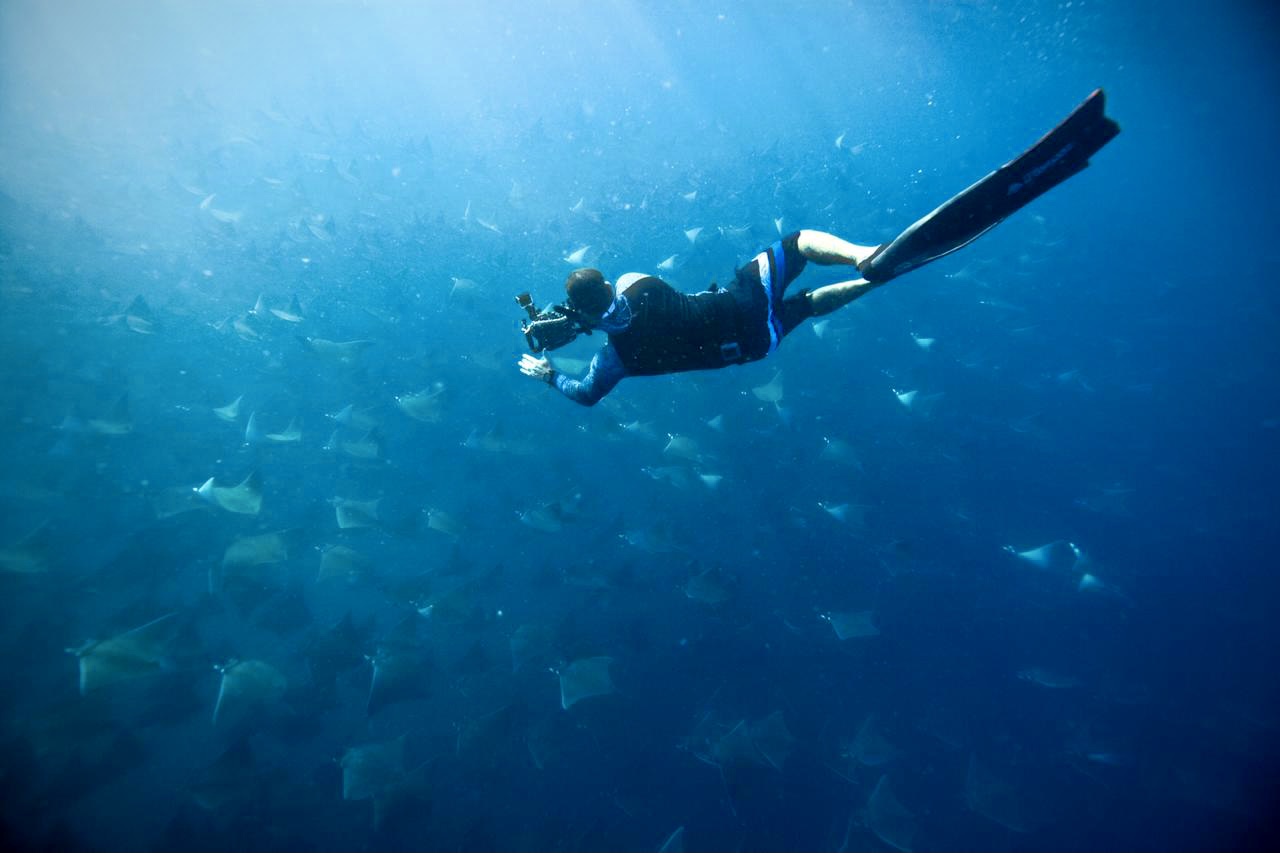
Jay’s message
Get involved with the animals, take action and be a voice for our oceans and their incredible inhabitants.
Learn more about Jay’s projects
Websites: www.jayclue.com, www.DiveNinjaExpeditions.com
Instagram: @jayclue, @diveninjas
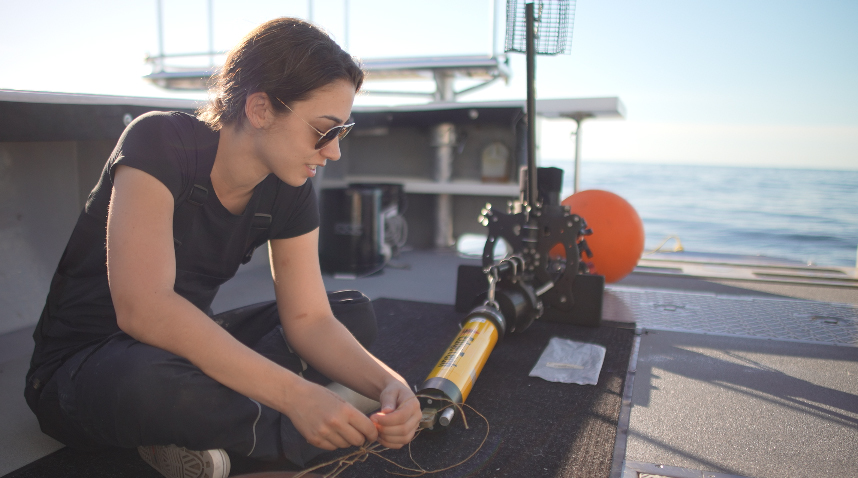
Lauren & Joe Romeiro, Marine Biologist & Underwater Cinematographer / Director of Photography & Executive Producer
Lauren graduated from the University of Rhode Island in 2016 with a B.S. in Marine Biology and in 2017 with a master’s in Oceanography. She has recently gone back to URI GSO to complete a PhD in shark ecology under Dr Kelton McMahon studying the movement, foraging, and reproductive ecology of New England sharks (specifically makos, blues, whites & porbeagles) through a multi-disciplinary approach of eDNA, fin cameras, cinematography, reproductive hormone assays, and stable isotope analyses.
Joe Romeiro is a multi-award-winning veteran wildlife cinematographer, filmmaker, and executive director of 333 Productions. Joe has spent over a decade filming and interacting with sharks all over the world. Joe and his wife, Lauren, own a 45′ research vessel located in Rhode Island, the R/V WARFISH. Joe has co-authored many scientific papers on shark behaviour, movement, ecology, and biology. His work focuses on his local New England waters, fighting for the survival of native species with an emphasis on the mako, blue, porbeagle, and great white shark. His work has fueled awareness and legislation to protect these species not just regionally, but worldwide.
For Lauren and Joe, knowing that one-third of shark species have become endangered due to overexploitation is all the drive they need to do what they do. Now more than ever, they realized that we need to change the narrative surrounding sharks. Their joint goal is to showcase sharks as beautiful creatures that are critical elements of our ocean’s ecosystem through personal interaction, education, research, and filmmaking.
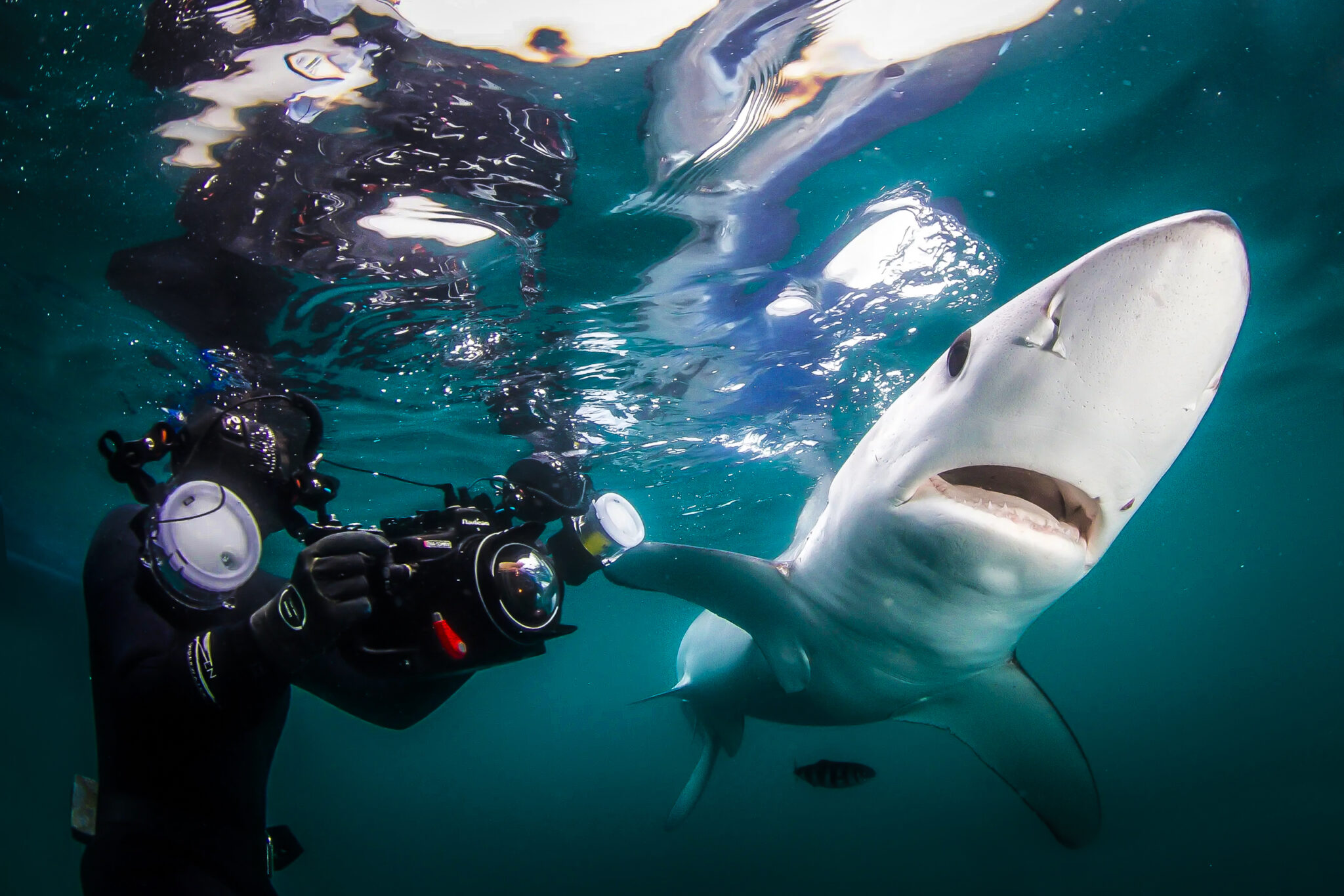
Proudest moments
Lauren and Joe are extremely proud of their quality research and film work through their research vessel ‘Warfish’ and their production studio. With these assets, they are able to achieve their objectives and showcase sharks to the public.
Following in their footsteps
For those hoping to follow in the footsteps of Lauren and Joe, they offer the following advice:
Join the field, whether that be science or film, with the animals being your best interest in mind. You want to make sure that your work is benefitting the animals in a positive way. With good science and storytelling, you can achieve amazing things.
Lauren and Joe’s message
Following Lauren and Joe’s YouTube channel (links below) and supporting their work is the best way that readers can help with their mission. Lauren and Joe jointly produce films and creative content that sheds a light on the situation many shark and marine life species are facing – the threat of extinction. Their goal and message are simple: to portray sharks the way they see them—as beautiful, awe-inspiring creatures that are critical to the health of ocean ecosystems.
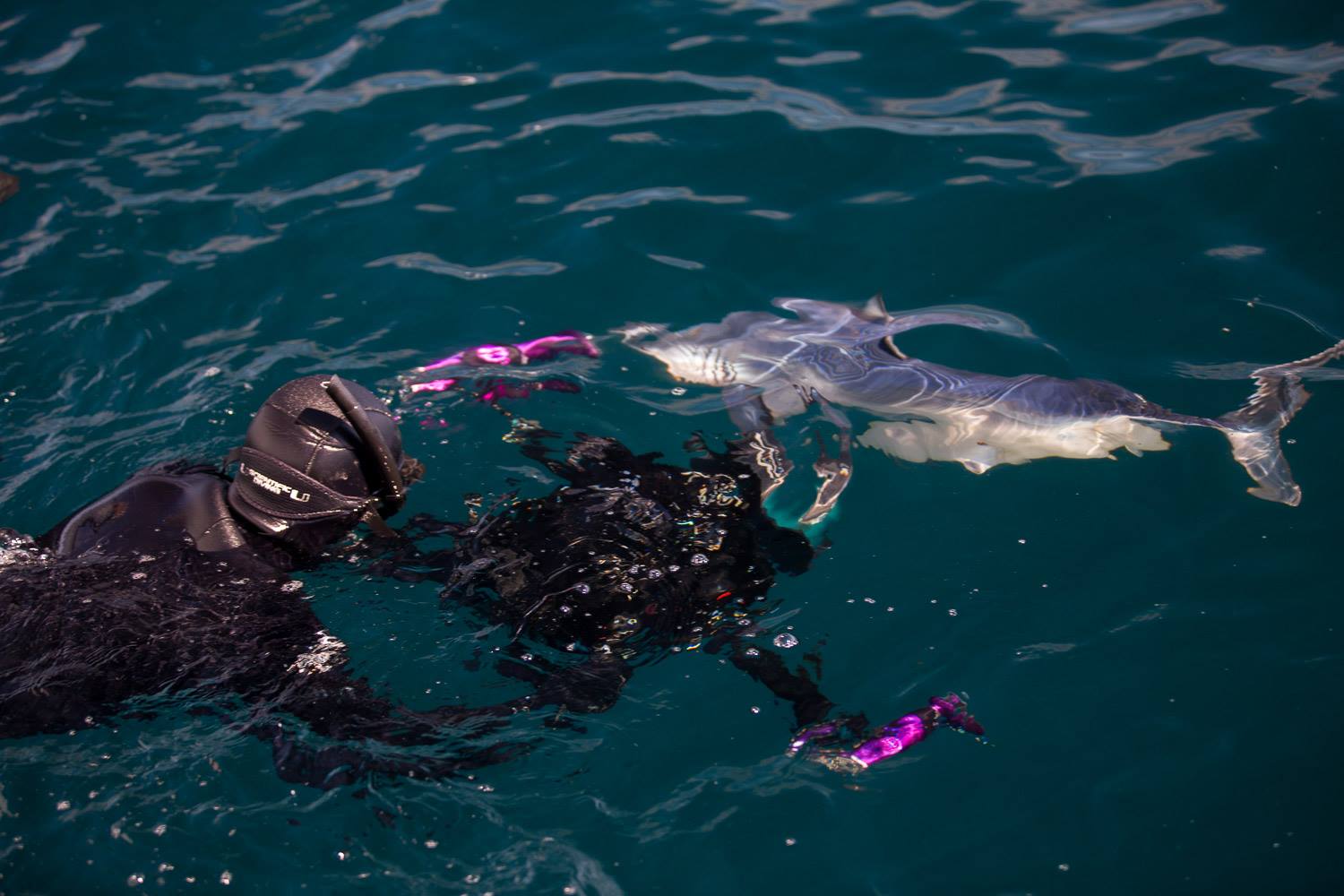
Learn more about Lauren and Joe’s projects
Websites: www.333productions.com, www.joeromeiro.com, www.laurenromeiro.com
YouTube: 333 Productions
Instagram: @joeromeiro333, @laurenromeiro333, @333productions
Twitter: @laurenromeiro, @joeromeiro
We hope that after reading about these amazing PADI Torchbearers you are now inspired to get involved in projects in your local community – or globally. To help support the animals that you love the most! Read more about the PADI Torchbearer initiative below:

